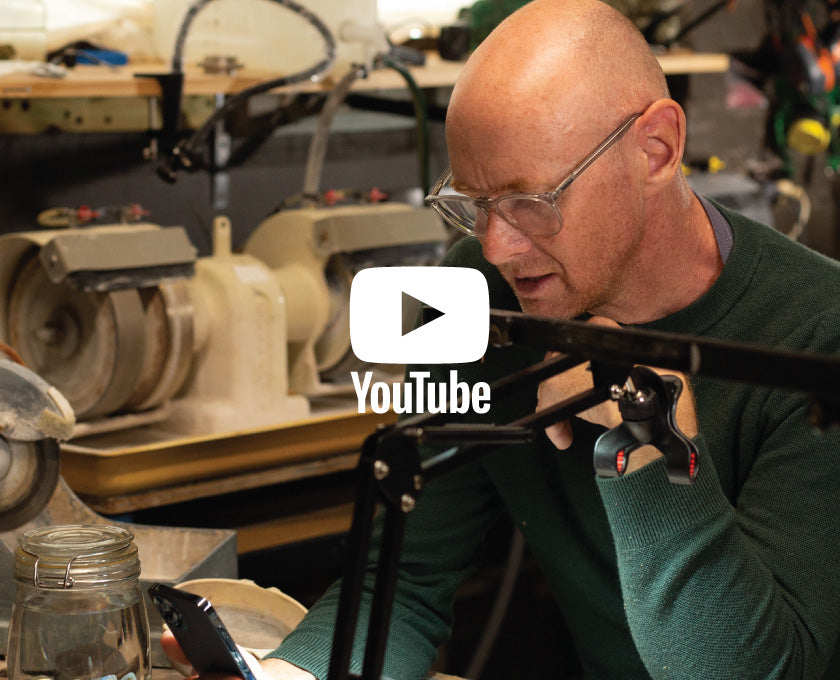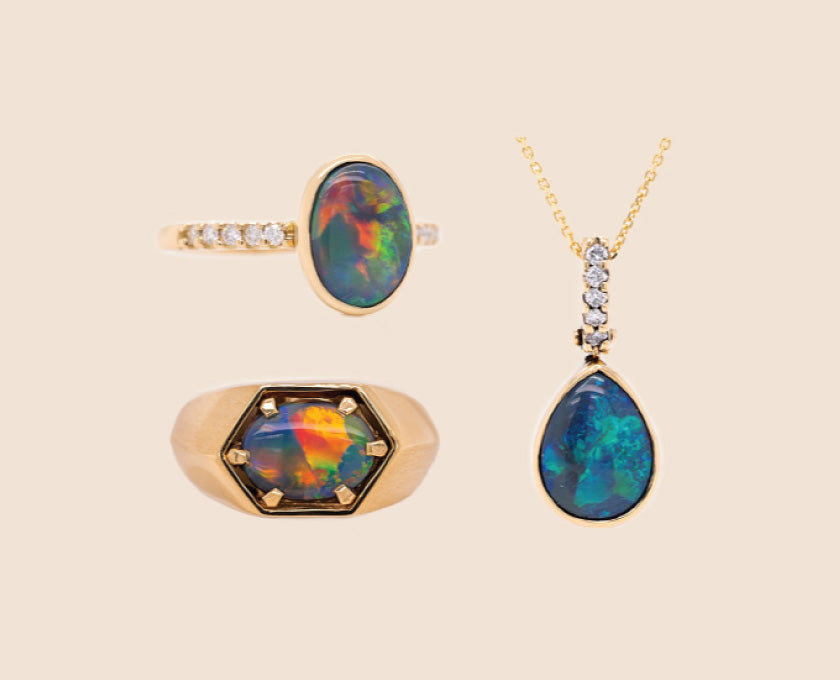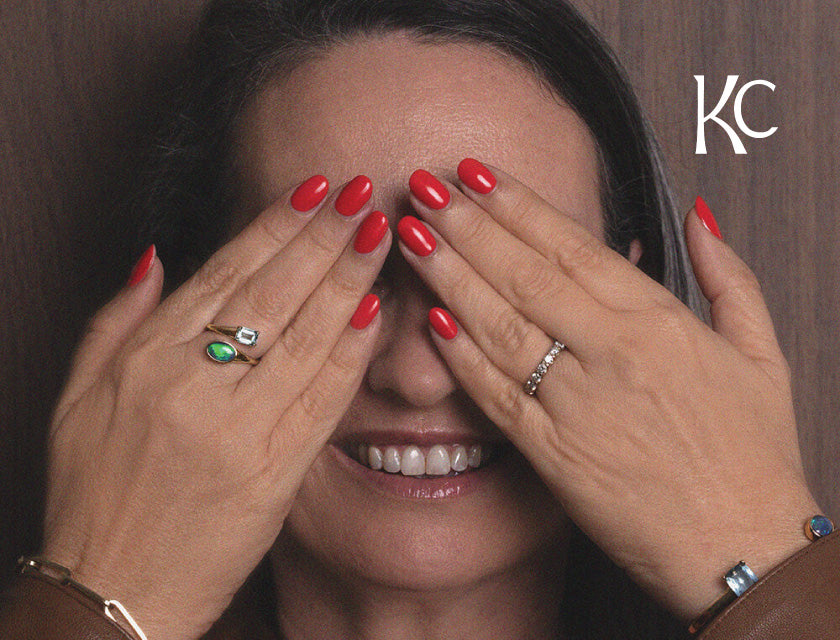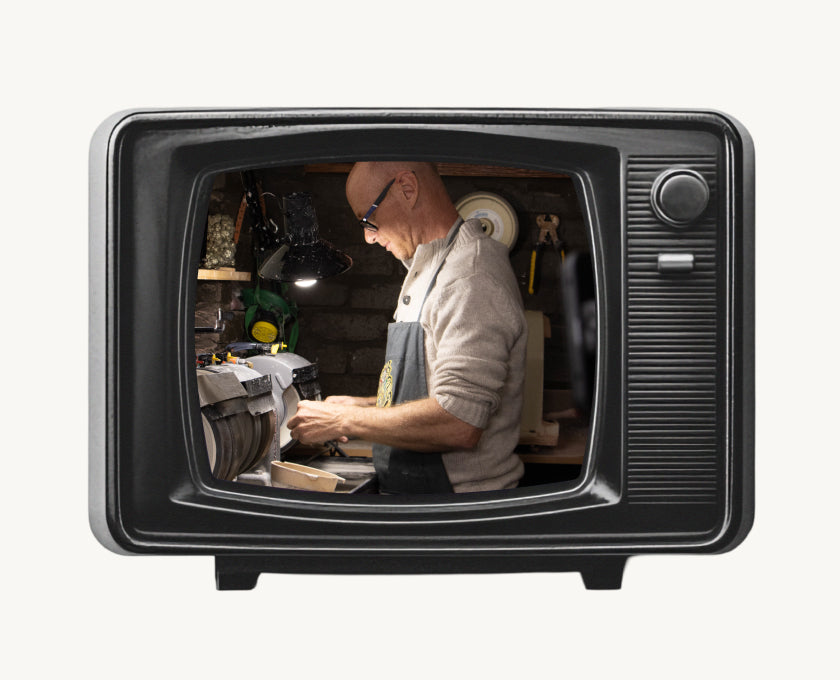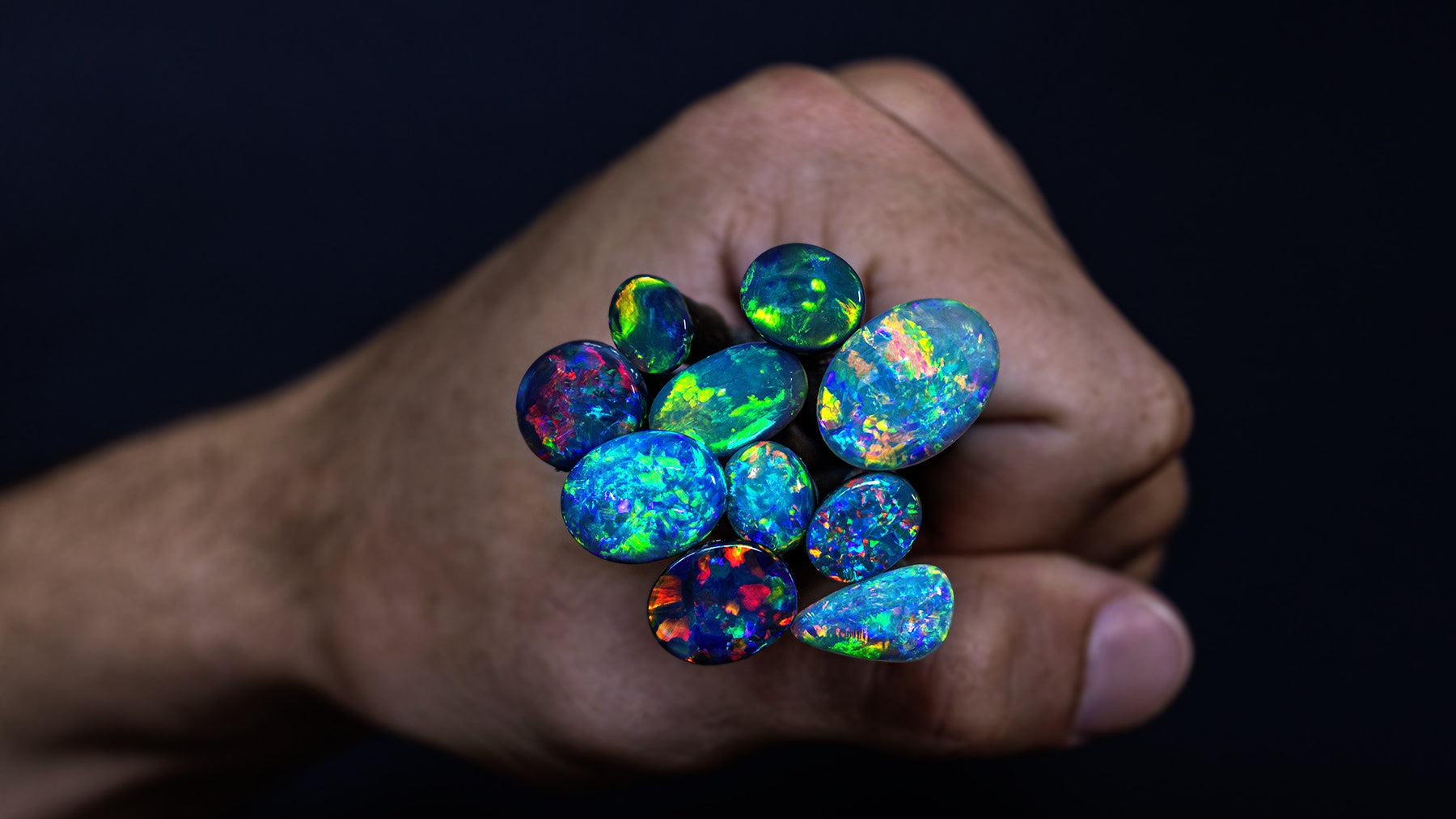Body tone refers to the underlying color of an opal—ranging from deep blacks to soft, milky whites. It’s not the same as play-of-color, but it has a big impact on how that color appears. In this section, we’ll walk you through how body tone is classified, why it matters, and how it helps identify different types of opal—black, white, crystal, or somewhere in between.
Opal Types
Black Opal
Black opal is the rarest and most valuable type of opal in the world, found almost exclusively in Lightning Ridge, Australia. What sets it apart is its dark body tone—rated N1 to N4 on the body tone scale—which creates a striking contrast and amplifies the brilliance of its play of color.
This rich tone comes from a natural layer of black potch (common opal without color) that sits directly beneath the color bar. When perfectly aligned, it intensifies the colors above, creating vivid, electric displays of red, green, blue, and more.
Because black potch with gem-quality color is so rare, true black opals are exceptionally uncommon—and highly sought after by collectors and designers alike.
Occasionally, a black opal may appear dark without any potch at all. Instead, it has a naturally tinted body tone—like smoky glass—while still allowing some light to pass through. These are known as black crystal opals and are considered exceptionally rare and highly prized.
Crystal Opal
Crystal opals are defined by their translucency—light passes through the gem, creating a luminous, layered effect that gives the play of color remarkable depth and dimension. Unlike other opals, crystal opals can span the full body tone scale, from light to dark, with their transparency creating a signature 3D, color-on-color appearance.
Free from potch or with very little of it, crystal opals are often all color—intensely vibrant and full of life. When clean and free of inclusions, both sides of the gem can be polished, revealing a stunning double-sided display.
Coveted for their brilliance and versatility, crystal opals are a favorite among collectors and cutters alike.
Dark Opal
Dark opals sit between black and white opals on the body tone scale, ranging from N5 to N6. They share the opacity and vibrant color play of black opals but with a slightly lighter base, which gives them a distinctive, soft intensity.
Found in nearly every Australian opal field, dark opals are more abundant than black opals but far from ordinary. Their value is driven by the brightness, pattern, and quality of color—but their lighter tone makes them a more accessible option for collectors.
If you're drawn to the drama of black opal but seeking something more budget-friendly, dark opal is a brilliant place to start.
White Opal
White opals are the most classic and widely recognized type of opal, with a soft, milky body tone that ranges from N7 to N9. While they’re more common than black or crystal opals, their pale base still allows for a gentle, often pastel play of color.
Primarily found in Coober Pedy—Australia’s most iconic white opal region—these gems have little to no transparency, distinguishing them from the glassier crystal opals. Though subtle, their charm lies in their lightness, making them a beautiful starting point for any opal collection.
Side Note: Coober Pedy is famous not only for its opals but also for its unique way of life—many locals live in underground homes to escape the harsh desert heat.
Boulder Opal
Boulder opal is one of the most distinctive types of Australian opal, found exclusively in Queensland. Unlike other opals, it forms within ironstone boulders, where thin veins of opal fill natural cracks and cavities in the host rock. These opals are often uncovered by splitting or grinding the boulder to reveal the vibrant face of color within.
Because the opal follows the contours of the ironstone, boulder opals tend to have organic, undulating surfaces and are frequently cut into freeform shapes. They may not be graded on the body tone scale, but can display brilliant play of color, often with striking and intricate patterns.
Side Note: Boulder opals are known for their unique character—some even reveal picture-like scenes within the opal face, and matching pairs can be created when the seam is split cleanly down the middle.
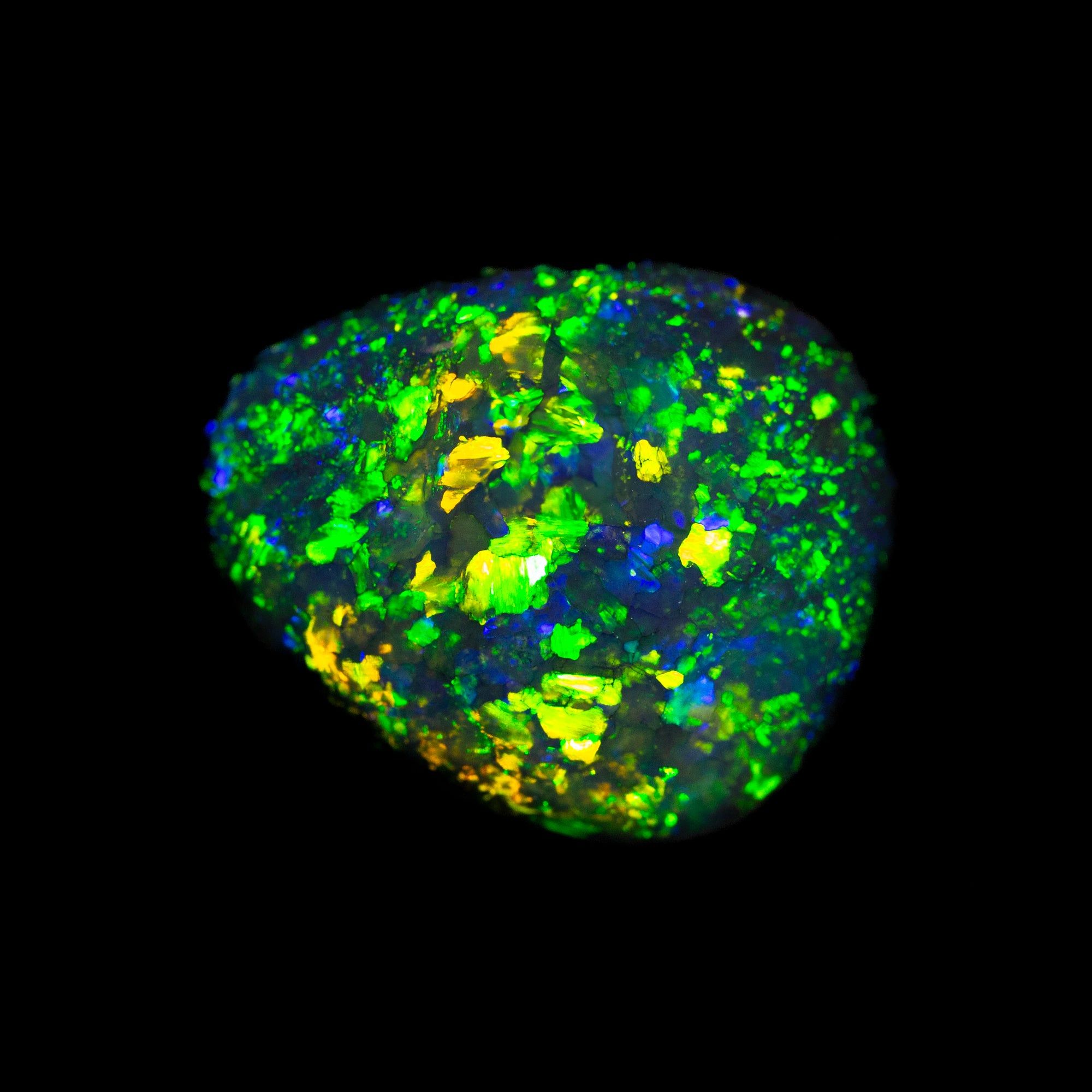
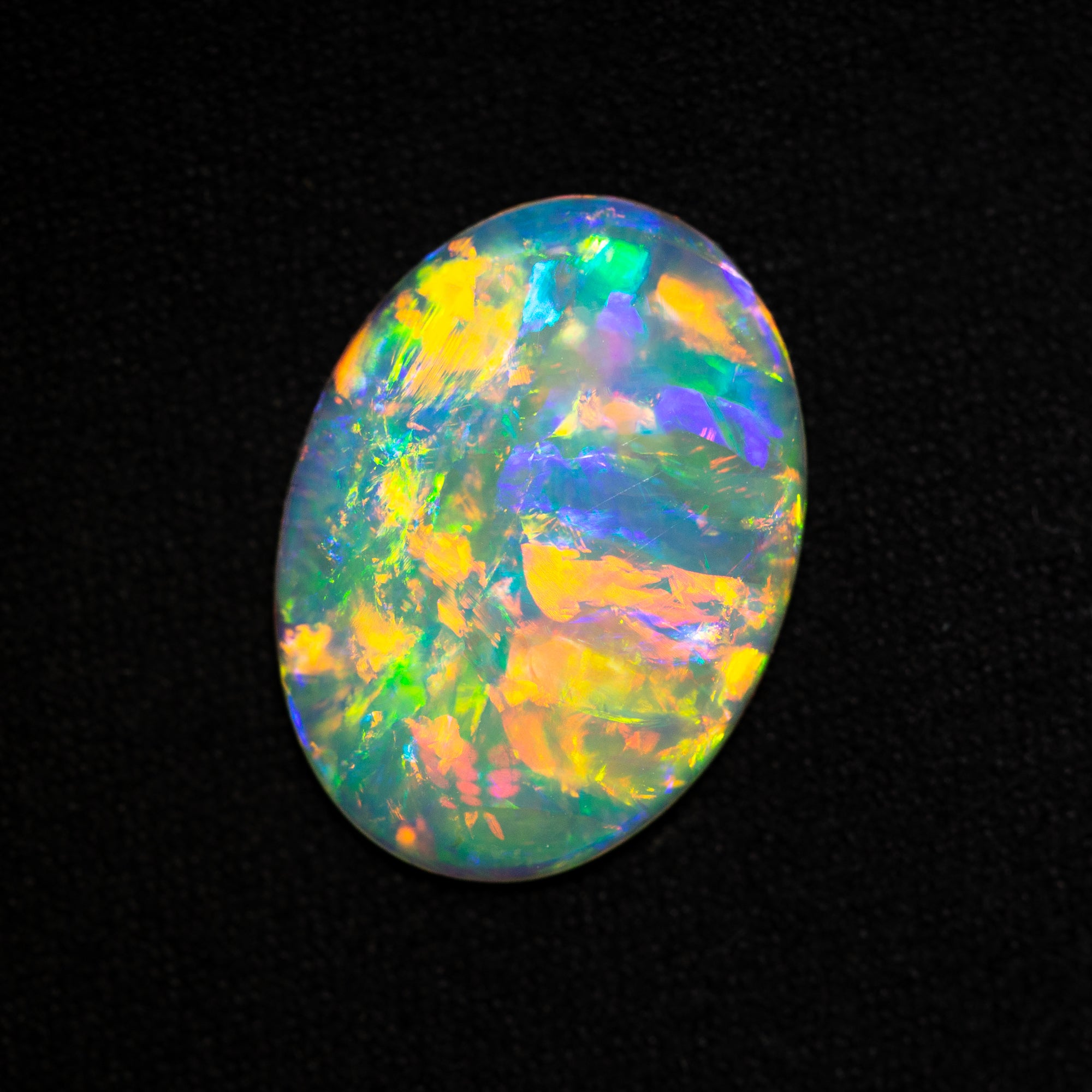
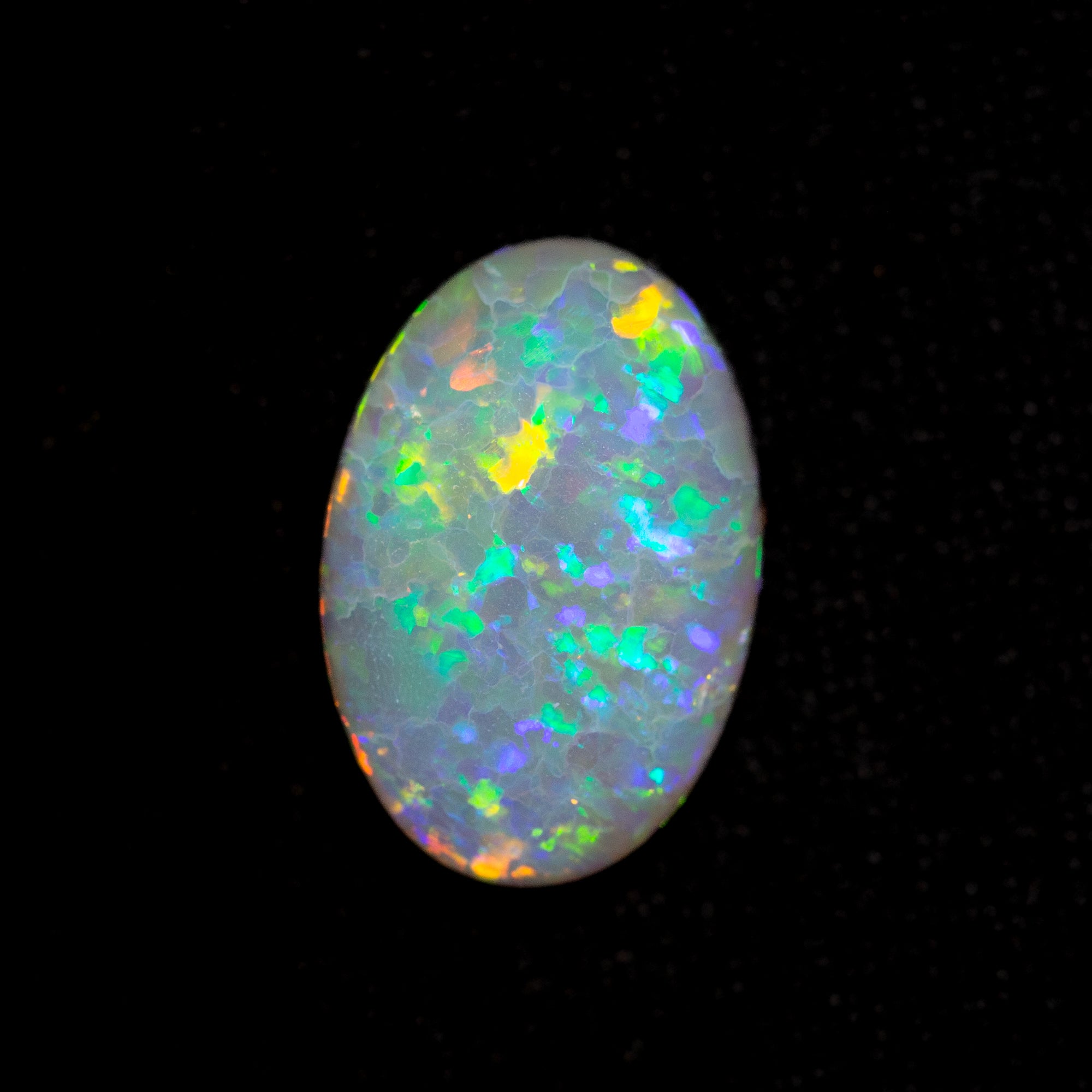
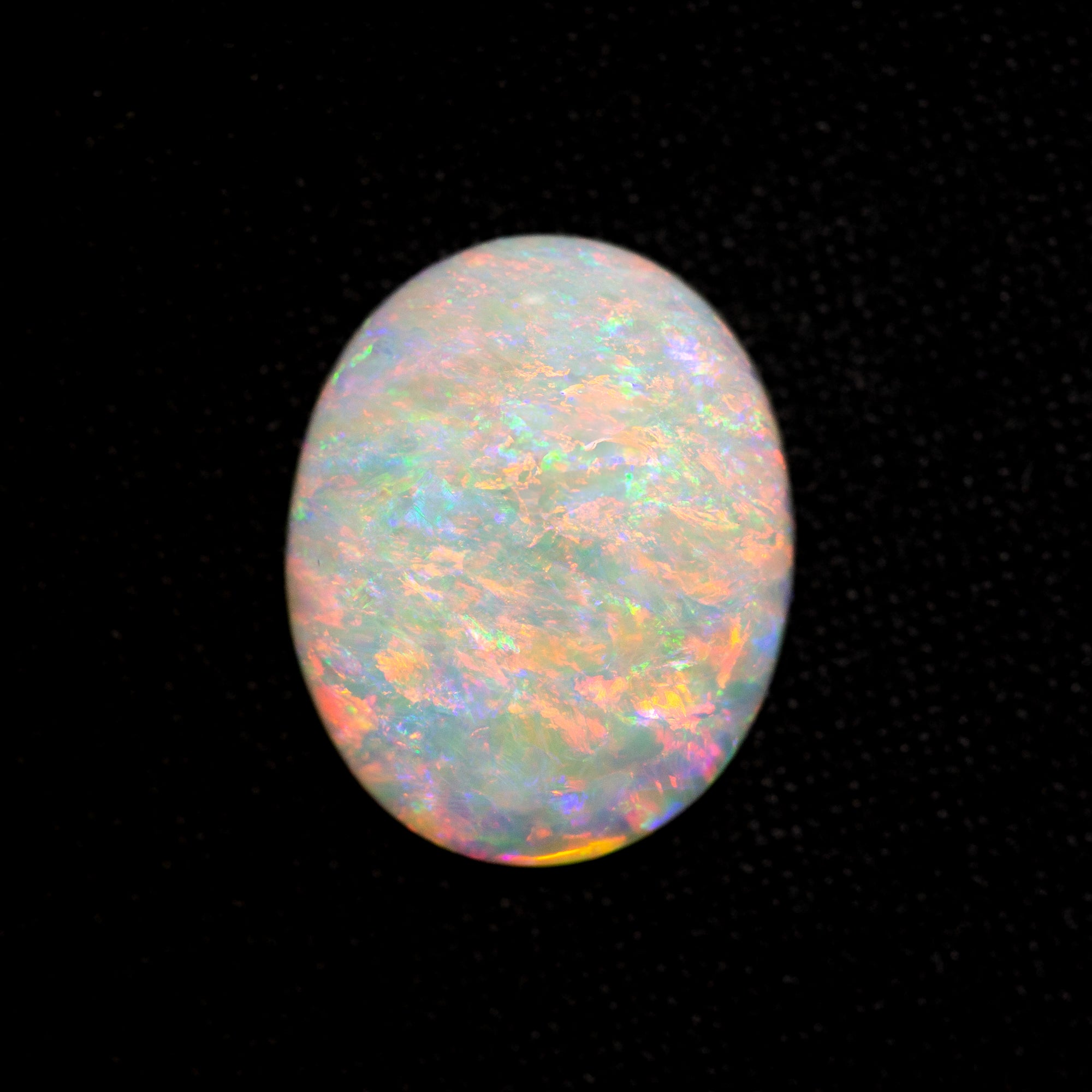
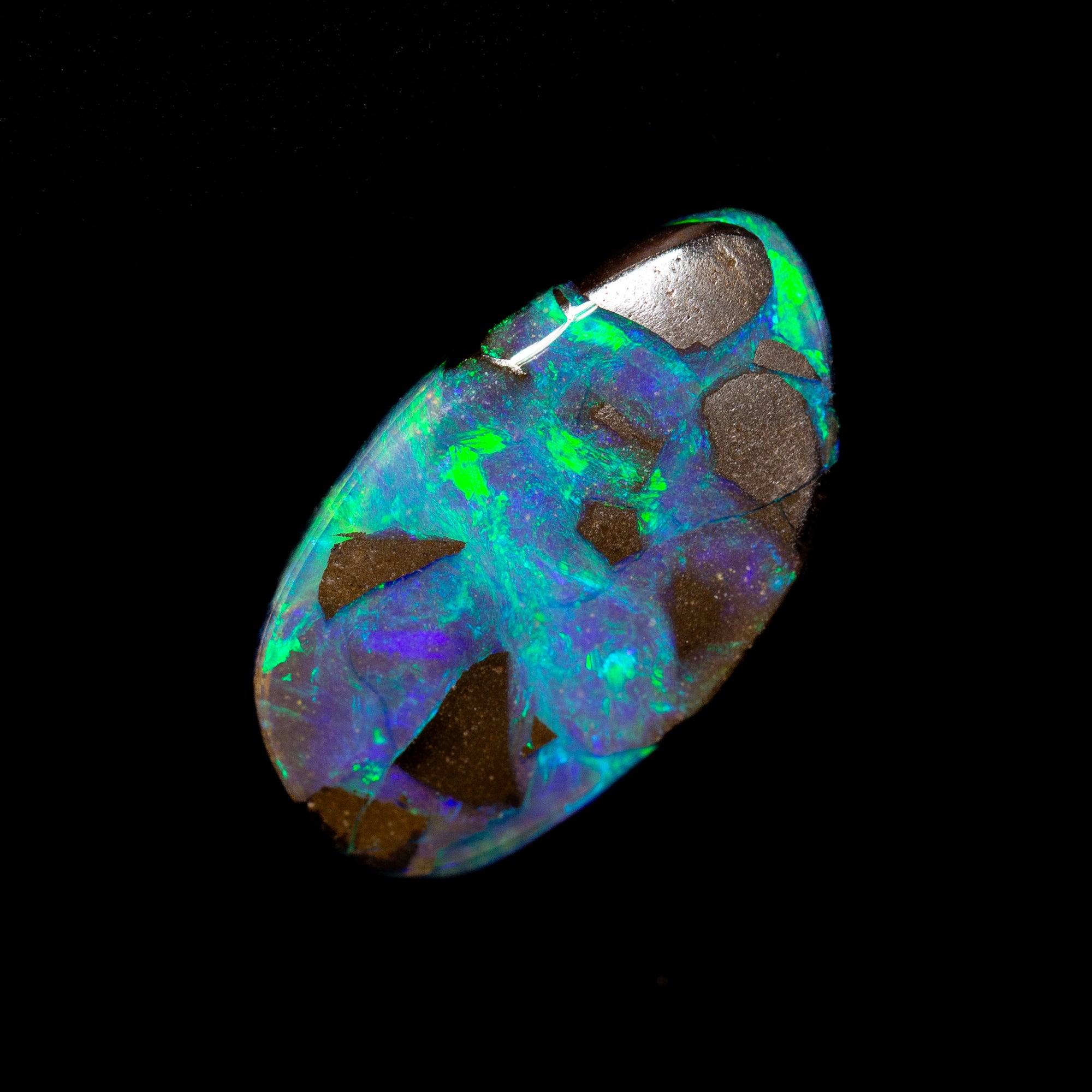
Justin Talks: Opal Types

Body Tone & Brighness of Opal
Opal is a truly unique gemstone, like a work of art, famous for its ever-changing play of color. But did you know that an opal’s body tone and brightness play a huge role in determining its value?
